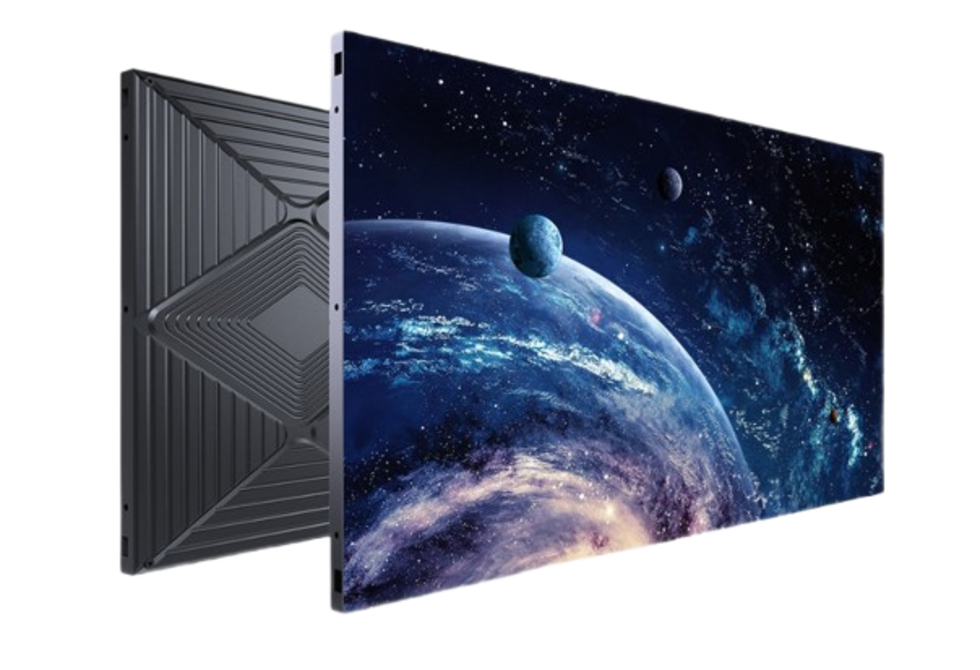In the competitive world of LED displays, COB (Chip-on-Board) technology already represents a major step up over traditional SMD modules. But within the COB ecosystem itself, not all implementations are equal. In this article, we’ll compare “standard COB” with what AET brings to the table — and why AET’s approach can deliver meaningful advantages in performance, durability, and efficiency.
Understanding Standard COB
Standard COB LED Displays refer to chip-on-board packaging where individual LED dies are mounted directly on a substrate (like a PCB), often covered by a reflow or resin. This minimizes interconnects and helps achieve higher pixel densities, better heat conduction, and improved optical uniformity. The result: smoother visuals, fewer visible tolerances between pixels, and better color blending.
However, standard COB systems can face challenges:
- Thermal management is critical, because tightly packed dies generate heat.
- Uniformity and calibration may suffer over large panels unless rigorous correction is done.
- Reliability under harsh environments can be compromised without robust protection against moisture, dust, or mechanical stress.
- Control and interface complexity may increase when scaling up or integrating with standard driving architectures.
How AET Does COB Differently
AET has innovated within the COB space through several technical enhancements and architectural decisions. Below are key ways AET sets itself apart:
1. Total Flip-Chip & Common Electrode Packaging
AET uses a “total flip-chip common ‘–’ electrode” COB packaging technology. This design allows micron-level independent pixels, meaning each pixel is more isolated and precisely controlled. With optical film sealing, AET ensures there is no optical interference between adjacent LEDs, reducing module artifacts and avoiding the “module effect.”
2. QCOB & Surface Optical Treatment
Beyond basic COB, AET also develops QCOB and uses surface optical treatments to add extra protective layers. These layers shield chips from moisture, dust, and environmental stress while preserving display brightness and consistency.
3. Standardized Control Structure
AET promotes a standard control architecture across mini and micro LED systems. This means modules and full panels can share control and driving frameworks (e.g. consistent interface and logic), reducing the need for redesigns and improving compatibility across sizes and resolutions.
4. NX COB ULTRA with INX Driver
AET’s flagship line, NX COB ULTRA, integrates a proprietary AET INX Driver IC — combining row and column drivers, logic, and receiving functions into a single chip. This reduces component count and latency (109 ms zero‑delay processing), while delivering 22‑bit grayscale at 7680 Hz refresh rate, and supports both PWM + PAM dimming. The “common cathode” design further enables a 35% reduction in power consumption.
5. Optimized Durability & Protection
With AET’s packaging and optical sealing, their COB modules gain higher protection levels and longer lifespans. Because each pixel is better isolated and sealed, there’s less cross‑interference or failure propagation across modules.
Why It Matters: Benefits of AET’s Approach
- Higher reliability & longevity — sealed pixels and advanced packaging reduce risks of moisture, dust, or mechanical damage.
- Better visual uniformity — no module lines, minimal optical interference, and precise pixel control yield smoother images.
- Lower power draw & thermal stress — common cathode design and efficient driver architecture cut power use and ease heat burden.
- Simplified system design — unified control architecture across sizes and flexible driving reduces engineering effort and cost.
- Scalability & flexibility — you can scale to large panels or irregular shapes without redesigning control pipelines.
Final Thoughts & Call to Action
In the broader landscape of COB, AET demonstrates how investing in the finer details — packaging, driver integration, control architecture, and protection — can move you from “standard COB” to a next-level LED solution. As a Professional LED Display Provider, AET offers compelling options for any organization looking to deploy high-end, long-term LED display systems (e.g., for control rooms, broadcast, corporate, or signage), making their differentiated COB technology a standout choice.





Comments